|
Books Should Be Free Loyal Books Free Public Domain Audiobooks & eBook Downloads |
|
|
Books Should Be Free Loyal Books Free Public Domain Audiobooks & eBook Downloads |
|
History Books |
|---|
|
Book type:
Sort by:
View by:
|
By: James Baldwin (1841-1925) | |
|---|---|
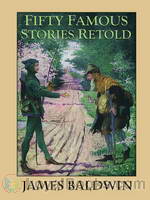 Fifty Famous Stories Retold
Fifty Famous Stories Retold
King Alfred and the Cakes. Damon and Pythias. The Sword of Damocles. Bruce and the Spider. These are stories that many people who grew up in the last century would be familiar with. They were included in our text books or to be found in anthologies in our school libraries. However, for a new generation growing up, some of these may be new and unknown. Hence, Fifty Famous Stories Retold by James Baldwin would indeed be a great addition to your children's bookshelf. James Baldwin, who shares his name with another famous American author was an editor, author and gifted teacher... | |
By: James Brendan Connolly (1868-1957) | |
|---|---|
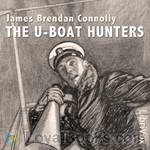 The U-Boat Hunters
The U-Boat Hunters
The author takes the listener on a tour of various ships used in WW1. He discusses the boats and the seamen who occupy them and their encounters with the German U-boats. It is a collection of short stories, each one complete, about them all. The author was also an Olympic athlete; winning a bronze, silver and gold medal in the Athens Olympics of 1896 and a silver in the Paris games of 1900. | |
By: James Cook | |
|---|---|
 A Voyage Towards the South Pole and Round the World
A Voyage Towards the South Pole and Round the World
Having, on his first voyage, discovered Australia, Cook still had to contend with those who maintained that the Terra Australians Incognita (the unknown Southern Continent) was a reality. To finally settle the issue, the British Admiralty sent Cook out again into the vast Southern Ocean with two sailing ships totalling only about 800 tons. Listen as Cook, equipped with one of the first chronometers, pushes his small vessel not merely into the Roaring Forties or the Furious Fifties but becomes the first explorer to penetrate the Antarctic Circle, reaching an incredible Latitude 71 degrees South, just failing to discover Antarctica. (Introduction by Shipley) | |
By: James Creelman (1859-1915) | |
|---|---|
 Why We Love Lincoln
Why We Love Lincoln
Brought to us by notable reporter and writer, James Creelman, this story of Abraham Lincoln is a more personal and simple portrait of the most popular U.S. President. This account is told in an easy flowing style giving many insights into the spirt and character of the man, making the story of Lincoln accessible both to young people and adults. | |
By: James E. Seaver (1787-1827) | |
|---|---|
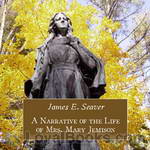 A Narrative of the Life of Mrs. Mary Jemison
A Narrative of the Life of Mrs. Mary Jemison
Mrs. Mary Jemison was taken by the Indians, in the year 1755, when only about twelve years of age, and has continued to reside amongst them to the present time. Containing an account of the murder of her father and his family; her sufferings; her marriage to two Indians; her troubles with her children; barbarities of the Indians in the French and Revolutionary Wars; the life of her last husband, and many historical facts never before published. | |
By: James Fenimore Cooper (1789-1851) | |
|---|---|
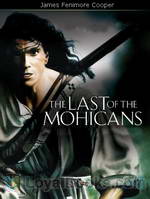 The Last Of The Mohicans
The Last Of The Mohicans
The Last of the Mohicans is an epic novel by James Fenimore Cooper, first published in January 1826. It was one of the most popular English-language novels of its time, and helped establish Cooper as one of the first world-famous American writers.The story takes place in 1757 during the French and Indian War, when France and Great Britain battled for control of the American and Canadian colonies. During this war, the French often allied themselves with Native American tribes in order to gain an advantage over the British, with unpredictable and often tragic results. | |
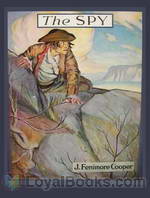 The Spy
The Spy
Between 1865-73 the tumultuous American Revolution rages on in different battlefields. The air is thick with hatred and suspicion as the Continental and British armies clash in bloody warfare. In Westchester County, New York, an area is considered a neutral ground for both forces, Harvey Birch plies his dangerous mission. An innocuous peddler by day, he is in fact an American spy, though he does nothing to correct anyone who assumes he is a British spy. In a magnificent country mansion, The Locusts, live the wealthy Whartons... | |
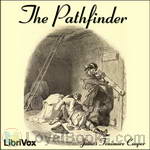 The Pathfinder
The Pathfinder
Natty Bumppo goes by many names: La Longue Carabine, Hawk Eye, Leatherstocking, and in this tale, The Pathfinder. Guide, scout, hunter, and when put to it, soldier, he also fills a lot of roles in pre-Revolution upstate New York. An old friend, Sergeant Dunham of the 55th Regiment of Foot, asks him to guide his daughter through the wilderness to the fort at Oswego where Dunham serves. With the French engaging native Indian allies against the British and the Yankee colonists, such a journey is far from safe... | |
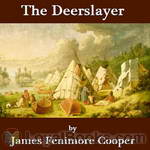 The Deerslayer
The Deerslayer
The Deerslayer, or The First Warpath (1841) was the last of James Fenimore Cooper’s Leatherstocking tales to be written. Its 1740-1745 time period makes it the first installment chronologically and in the lifetime of the hero of the Leatherstocking tales, Natty Bumppo. | |
 The Pioneers
The Pioneers
The Pioneers: The Sources of the Susquehanna; a Descriptive Tale is one of the Leatherstocking Tales, a series of five novels by American writer James Fenimore Cooper. The Pioneers was first of these books to be published (1823), but the period of time covered by the book (principally 1793) makes it the fourth chronologically. (The others are The Deerslayer, The Last of the Mohicans, The Pathfinder, and The Prairie.)The story takes place on the rapidly advancing frontier of New York State and features... | |
 Prairie - A Tale
Prairie - A Tale
The story opens with Ishmael, his family, Ellen and Abiram slowly making their way across the virgin prairies of the Midwest looking for a homestead, just two years after the Louisiana Purchase, and during the time of the Lewis and Clark Expedition. They meet the trapper (Natty Bumppo), who has left his home in New York state to find a place where he cannot hear the sound of people cutting down the forests. In the years between his other adventures and this novel, he tells us only that he has walked all the way to the Pacific Ocean and seen all the land between the coasts (a heroic feat, considering Lewis and Clark hadn’t yet completed the same trek). | |
By: James Ford Rhodes (1848-1927) | |
|---|---|
 History of the Civil War, 1861-1865
History of the Civil War, 1861-1865
Superbly written, this overview of the Civil War, won a Pulitzer Prize in History in 1918. Rhodes covers not only the battles and the generals of the war but gives us a good deal of insight into the politics, economics, international relations and the strategy/thinking of the times. When at times he brings forth an opinion it is clearly stated, so as not to be confused with the facts. Comprehensive and enjoyable, you will find this History of the Civil War both illuminating and captivating. NOTE: Footnotes will not be read but can be found online at https://archive.org/details/historycivilwar01rhodgoog/mode/2up. | |
By: James Francis Hogan (1855-1924) | |
|---|---|
 Gladstone Colony: An Unwritten Chapter of Australian History
Gladstone Colony: An Unwritten Chapter of Australian History
This is an early history of the failed attempt to found the colony of North Australia at Gladstone, in what is now Central Queensland. | |
By: James Gairdner (1828-1912) | |
|---|---|
 Henry the Seventh
Henry the Seventh
Henry VII, the founder of the Tudor dynasty, less known than his son, Henry VIII, or granddaughter Elizabeth I, is often overlooked. This King toppled the ruling House that had held England's throne for over four hundred years, the Plantagenets, and took a divided, war torn country and made one of the richest in Europe by the time of his death in 1609. Henry VII’s reign was characterized by thrift, prudence, and cool-headed political strategies. The author, James Gairdner , was a British historian. He specialized in 15th-century and early Tudor history. - Summary by Cavaet | |
By: James Green (1864-1948) | |
|---|---|
 News From No Man's Land
News From No Man's Land
James Green was a Methodist minister who was a chaplain to Australian troops in the Boer War and in the Australian Imperial Force in World War I. This memoir was published 1917, while the war was on-going. “In spite of necessary suppression, or vagueness of names of localities, my comrades of the Fifty-fifth Battalion, to which I was attached, will recognize many of the incidents described, and I can only hope that reading what the padre has to say may cheer them in some lonely places, or help them to be happy though miserable in some indifferent billets... | |
By: James J. Walsh (1865-1942) | |
|---|---|
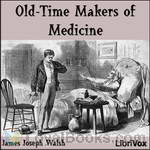 Old-Time Makers of Medicine
Old-Time Makers of Medicine
Dr. Walsh’s Old-Time Makers of Medicine chronicles the history and development of modern medicine from ancient times up to the discovery of America. Throughout this historical guide, Dr. Walsh shows numerous examples of practices thought to be entirely modern that were clearly anticipated hundreds or thousands of years ago. Ancient healers sought to use the body’s natural healing ability, rather than rely exclusively on external cures. Physicians even in ancient times relied on what is now recognized as the placebo effect... | |
By: James Moores Ball (1862-1929) | |
|---|---|
 Andreas Vesalius, The Reformer of Anatomy
Andreas Vesalius, The Reformer of Anatomy
Vesalius is one of the foundation stones of modern medicine. Forsaking the study of anatomy by reading the ancients, he instead dissected bodies and drew detailed illustrations of his observations. He was enormously influential in the development of modern medicine. This 1910 biography opens up his life admirably. The printed book contains many illustrations taken from his works. The listener will want to be aware that modern historians of medicine are much more positive about the contributions of medieval Arabic medical teachers than the author of this book. - Summary by David Wales | |
By: James Norman Hall | |
|---|---|
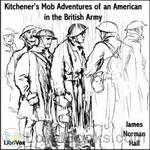 Kitchener's Mob Adventures of an American in the British Army
Kitchener's Mob Adventures of an American in the British Army
“Pvt Ryan”, “Platoon”, “A Soldier’s Home”, “Kitchener’s Mob”. These aren’t happy stories, they are about the experience of War. War at different times, and although modern warfare may be more sanitized, the adventure, the horror, the emotions don’t change. James Norman Hall has been there. He “Saw the Elephant”, and his portrayal of his WWI experience is a tribute to those ordinary people who do such extraordinary things. Those who have served will identify with at least some part if not all of this book, be it the rigors of training, the camaraderie, or possibly those memories that try as you may, you can never make go away... | |
By: James Orton (1830-1877) | |
|---|---|
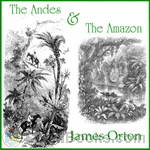 The Andes and the Amazon
The Andes and the Amazon
This book, with the subtitle "Across the Continent of South America" describes the scientific expedion of 1867 to the equatorial Andes and the Amazon. The route was from Guayaquil to Quito, over the Cordillera, through the forest to Napo, and, finally, on the Rio Napo to Pebas on the Maranon. Besides this record, the expedition - under the auspices of the Smithsonian Institute - collected samples of rocks and plants, and numerous specimen of animals. The scientists also compiled a vocabulary of local languages and produced a new map of equatorial America... | |
By: James Otis (1848-1912) | |
|---|---|
 Richard of Jamestown: A Story of the Virginia Colony
Richard of Jamestown: A Story of the Virginia Colony
Richard of Jamestown by James Otis was written for children with the purpose to show them the daily home life of the Virginia colonists. It is written from the viewpoint of a young boy named Richard Mutton. | |
By: James Parton (1822-1891) | |
|---|---|
 Captains of Industry
Captains of Industry
In this volume are presented examples of men who shed lustre upon ordinary pursuits, either by the superior manner in which they exercised them or by the noble use they made of the leisure which success in them usually gives. Such men are the nobility of republics.Most of these chapters were published originally in "The Ledger" of New York, and a few of them in "The Youths' Companion" of Boston, the largest two circulations in the country. I have occasionally had reason to think that they were of some service to young readers, and I may add that they represent more labor and research than would be naturally supposed from their brevity... | |
By: James Stephens (1882-1950) | |
|---|---|
 The Insurrection in Dublin
The Insurrection in Dublin
The Easter Rising was a rebellion staged in Ireland in Easter Week, 1916. The Rising was an attempt by militant Irish republicans to win independence from Britain by force of arms. This account was written by Irish novelist James Stephens, who lived and worked in Dublin at the time. | |
By: Jan Hus | |
|---|---|
 Letters of John Huss
Letters of John Huss
Personal correspondence of Bohemian religious reformer John Huss from 1411 when he was exiled from Prague through his death by burning as heretic in 1415 by order of the Council of Constance. These were first published in 1536 by the German Protestant reformer Martin Luther and his introduction is included here. - Summary by Rom Maczka | |
By: Jane Addams | |
|---|---|
 The Spirit of Youth and the City Streets
The Spirit of Youth and the City Streets
Much of the material in the following pages has appeared in current publications. It is here presented in book form in the hope that it may prove of value to those groups of people who in many cities are making a gallant effort to minimize the dangers which surround young people and to provide them with opportunities for recreation. (Introduction by Jane Addams) Jane Addams (1860 – 1935) was the first American woman to be awarded the Nobel Peace Prize. In a long, complex career, she was a pioneer settlement worker and founder of Hull House in Chicago, a public philosopher, a sociologist, an author and a spokesperson for women's suffrage and world peace. | |
By: Jane Porter (1776-1850) | |
|---|---|
 The Scottish Chiefs
The Scottish Chiefs
An adventure novel about William Wallace, one of the most popular books ever written by Jane Porter. The French version was even banned by Napoleon, and the book has remained very popular with Scottish children, but is equally enjoyable for adults. | |
By: Jean McKishnie Blewett (1862-1934) | |
|---|---|
 Christy and The Pipers
Christy and The Pipers
volunteers bring you 9 recordings of Christy and The Pipers by Jean McKishnie Blewett. This was the Fortnightly Poetry project for November 4, 2018. ------ This poem, set in Scotland, tells of a woman's reaction to the Pipes . | |
By: Jean Toomer (1894-1967) | |
|---|---|
 Cane
Cane
Reading this book, I had a vision of a land, heretofore sunk in the mists of muteness, suddenly rising up into the eminence of song. Innumerable books have been written about the South; some good books have been written in the South. This book is the South. . . . . Part One is the primitive and evanescent world of Georgia. Part Two is the threshing and suffering brown world of Washington. . . . Part Three is Georgia again . . . this black womb of the ferment seed: the neurotic, educated, spiritually stirring Negro. From the Forward by Waldo Frank | |
By: Jean-Henri Merle d'Aubigné (1794-1872) | |
|---|---|
 History of the Reformation in the Sixteenth Century, Volume 1
History of the Reformation in the Sixteenth Century, Volume 1
The History of the Reformation in the Sixteenth Century, by Jean-Henri Merle d’Aubigné, is a classic work on the great events that re-opened the Christian gospel to a needy world. It tells of how the twenty-year-old Martin Luther, browsing through books in the library at the University of Erfurt, takes down from the shelf a particular volume that has caught his interest. He has never seen anything like it. It is a Bible! He is astonished to find in this volume so much more than the fragments of gospels and epistles that were selected for public reading in churches... | |
 History of the Reformation in the Sixteenth Century, Volume 2
History of the Reformation in the Sixteenth Century, Volume 2
The History of the Reformation in the Sixteenth Century, by Jean-Henri Merle d’Aubigné, is a classic work on the great events that re-opened the Christian gospel to a needy world. The author was a Swiss Protestant pastor. He was also a historian with a great understanding of the Bible, along with a broad and deep knowledge of the Reformation.D’Aubigné tells the story of outstanding people who had a love for God and his word, and who dared to present biblical truths which had been obscured for centuries... | |
By: Jeannie Gunn (1870-1961) | |
|---|---|
 We of the Never-Never
We of the Never-Never
We of the Never Never is the second book written by Jeannie Gunn under the name of “Mrs Aeneas Gunn”. It is considered by many as a classic of Australian writing. The book was published as a novel but draws on the author’s own experience in settling on the Elsey Station way out in the "back blocks" of the Katherine region of the Northern Territories of Australia early in the 20th century. The primary concession to fiction was that she fictionalised the names of many of the real-life characters that featured in her life at the time, giving them names like "the Sanguine Scott", "the Fizzer", "the Quiet Stockman" and "the Dandy"... | |
By: Jesse James, Jr. (1875-1951) | |
|---|---|
 Jesse James, My Father
Jesse James, My Father
A biography of Jesse James as told by his son, Jesse James, Jr. We are treated to inside tales of Jesse's childhood and home life; what drove him to become a Confederate guerrilla during the Civil War; his life after the war and how he became a wanted man. Since it was written by his son, it is a little biased and we are not told anything about any crimes Jesse and his gang committed. Some of the stories of Jesse's war adventures are a little hard to believe, but a good read nonetheless. | |
By: Jessie Benton Frémont | |
|---|---|
 The Will and the Way Stories
The Will and the Way Stories
Simply put, this is a book of 9 short vignettes each of which describes a different scenario which demonstrates the age old adage: 'where there's a will, there's a way'. | |